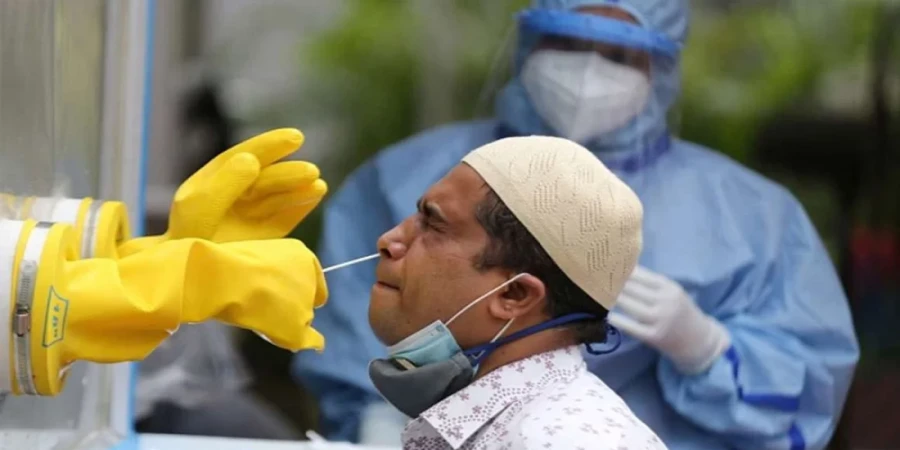
ছবি: Photo: Collected
Fresh infections raise alarm as virus resurfaces in the port city; authorities urge vigilance after 81 tests reveal rising trend in urban neighborhoods.
After a stretch of relative calm, Chattogram has once again recorded fresh cases of COVID-19, signaling a quiet but concerning return of the virus in Bangladesh’s bustling port city. According to a report released Friday afternoon by the Civil Surgeon’s Office, six new individuals have tested positive for the coronavirus in the past 24 hours, bringing the city’s total active case count to 56.
The report, which covers testing data from the previous day, outlines a detailed snapshot of the city's ongoing surveillance efforts. Samples from 81 individuals were analyzed across six designated laboratories within Chattogram. Among the tested facilities were Chittagong Medical College, Chevron Lab, Medical Center Hospital Lab, National Hospital, Metropolitan Hospital, and Evercare Hospital Lab. These testing hubs have played a critical role in tracking community-level transmission since the onset of the pandemic.
The latest results reveal that Chittagong Medical College Lab identified one positive case, Chevron Lab detected two, National Hospital Lab found one, and Metropolitan Hospital uncovered two additional infections. The remaining labs reported no new positives from their respective sample batches.
Dr. Jahangir Alam Chowdhury, Chattogram’s Civil Surgeon, confirmed the findings in a public statement. He noted that all six individuals newly diagnosed with COVID-19 are residents of different localities within the city. While no immediate hospitalization or critical symptoms were reported among the latest patients, the resurgence has reignited calls for caution.
“This is a wake-up call,” said Dr. Chowdhury. “Though the numbers are still low, they remind us that the virus has not disappeared. Lax behavior and ignoring safety protocols could lead to a sudden spike, especially in densely populated urban areas.”
Public health officials have begun contacting the newly diagnosed patients to initiate contact tracing and monitor potential secondary transmission. The current plan includes isolating infected individuals and increasing localized testing in neighborhoods where new cases have emerged. Authorities are also encouraging citizens to report symptoms and maintain mask-wearing in crowded settings.
Chattogram, one of Bangladesh’s largest and most economically vital cities, has seen significant fluctuations in COVID-19 case numbers since the beginning of the pandemic. From initial surges in early 2020 to a notable decline over the past several months, the city had managed to maintain relative control—until now.
Experts warn that while the latest figures may not seem alarming on the surface, they could be indicative of a broader pattern. With increased travel, gatherings, and reduced use of preventive measures, sporadic outbreaks could quickly grow if not curtailed early.
The city’s healthcare system, though more experienced and better equipped than during the first wave, remains cautious. Several hospitals have retained COVID-dedicated wards, and labs continue to conduct regular testing, though at a reduced volume compared to peak periods.
“The virus adapts, and so must we,” commented a local epidemiologist who requested anonymity. “What we are seeing now may be isolated, but if left unchecked, it could evolve into a mini-outbreak or worse.”
Municipal authorities are expected to review containment strategies in the coming days. Discussions are underway to possibly reintroduce advisories on public transport, marketplaces, and educational institutions if case numbers continue to rise. Though a lockdown is not currently being considered, emphasis is being placed on preventive health education campaigns and community-level awareness drives.
Meanwhile, residents in various neighborhoods reacted with mixed feelings. While some expressed concern over the return of COVID-19 to their city, others showed little surprise, having already anticipated a rebound with the change in season and increased social activity.
“I knew it was only a matter of time,” said Mizanur Rahman, a shopkeeper in Anderkilla. “People stopped wearing masks. No one was using sanitizer anymore. We thought COVID was over, but now it’s back knocking at our doors.”
In contrast, younger citizens, particularly students and office workers, seemed more indifferent, reflecting a growing pandemic fatigue that public health officials say could be dangerous.
The national health authorities are continuing to monitor the situation closely. While there has been no indication of a major outbreak elsewhere in the country, the Health Directorate in Dhaka has issued fresh instructions to district-level officers to remain alert and reinstate early containment strategies where needed.
The Ministry of Health has also urged the public to remain cautious during the upcoming Eid festivities and the monsoon season, both of which historically contribute to heightened vulnerability due to increased travel, social gatherings, and lower immune resilience.
In Chattogram, local health units have been asked to increase random testing and issue weekly updates on neighborhood-wise case trends. As of now, city officials are confident that the outbreak is manageable but warn that the next two weeks will be critical in determining whether the virus is making a full-fledged comeback or simply flickering in isolated pockets.
For now, the city waits—watchful, weary, and hoping that this resurgence remains just a ripple, not the start of another wave.
repoter





